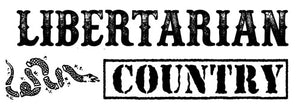Libertarianism transcends the modern view of the left-right political spectrum and cannot be compartmentalized into either side.
The origins of the left-right political paradigm refer to seating positions in the 1789 French National Assembly, the parliament formed after the French Revolution. Nobility and high-ranking religious leaders sat on the right side of parliament, whereas commoners and lower-ranking clergy sat on the left side.
Since political identity is more complex, a different compass is used in 21st-century politics. The spectrum measures the degree of libertarianism vs. authoritarianism and factors in economic standing.

Left Libertarianism
The libertarian left category describes libertarians who lean economically left, endorsing ideas such as free market socialism, organic hierarchy, worker cooperatives, employee-owned businesses, worker self-management, decentralized political structures, and libertarian municipalism.
Overlapping with Marxism and anarchism, libertarian socialists espouse traditional left-wing beliefs such as worker's rights, anti-capitalism, anti-corporatism, trade unions, voluntary wealth redistribution and social liberalism--without interference from an authoritarian state.
The bottom far-left represents left anarchism or anarcho-socialism. The right, top side of the left-libertarian block means libertarians who favor democratic governments with limited power, economic progressivism, and social liberalism.
Many different political identities, attitudes and philosophies can be categorized within the left-libertarian block and are not all mentioned in this article.
Authoritarian Left
The authoritarian-left block represents people who favor state control, central planning and centralized authority. The most extreme, the top-left section, describes authoritarian communism, such as Maoism or Stalinism.
Right Libertarianism
The libertarian right category describes libertarians who endorse laissez-faire capitalism and the traditional company model, where business owners purchase labor in a free market economic system.
Where libertarian socialists believe in collective management and shared ownership of the means of production, right-libertarians believe in private property, emphasizing individualism and the personal liberty to amass unlimited wealth.
Right libertarianism is often associated with traditional conservative values but is not uniquely defined as such. Libertarianism is a political philosophy heralding individual liberty as a core value. Thus, whether a libertarian chooses to live by conservative morality or not, they recognize the individual liberty of all people, and it is ultimately a socially liberal philosophy.
The left and left-center portion of the right-libertarian block represents capitalist libertarians who believe in the rule of law, limited government, constitutional conservatism, accountability for democratically elected officials, a defense-optimized military, and anti-authoritarianism.
The bottom-right of the right-libertarian block represents anarcho-capitalism, anarchists who believe in a voluntary society functioning with the complete absence of state authority.
Many different attitudes, ideas, and political philosophies fall within the right-libertarian block and are not all mentioned in this article.
Authoritarian Right
Like the authoritarian left, the authoritarian right represents people who favor moral law, state control, police states, religious authority, militarism, or authoritarianism. The extreme top-right section defines totalitarian fascism, endorsed by rulers like Hitler or Mussolini.
Libertarianism
The critical thing to remember about libertarianism is that it is not ubiquitously left or right; it is about embracing individual liberty. Different economic models can coexist under the banner of libertarianism once respect for each individual's freedom is acknowledged.
For more information on the principles of libertarianism, see our Ultimate Guide to Libertarianism.


